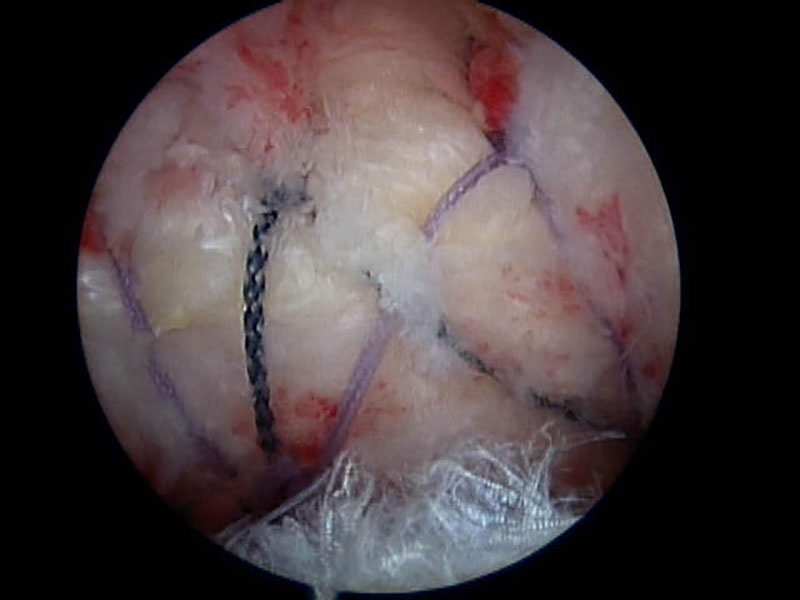WHAT IS IT?

It is an operation usually performed under general anaesthesia. A small camera is placed into the joint through a small incision. This allows the tissues of the shoulder to be examined and/ or repaired. To do a repair, an additional 3-4 small incisions may need to be made.
The following procedures may be performed during the surgery:
ROTATOR CUFF REPAIR

This involves repair of torn tendons with sutures and suture anchors placed into the bone.
SURGERY FOR SHOULDER IMPINGEMENT
This involves removal of inflamed tissue (bursitis) above the rotator cuff tendons as well as smoothing over any sharp spurs that could be rubbing on the tendons.
SURGERY FOR AC JOINT ARTHRITIS
The arthritic end of the collar bone is removed. The aim of this is to significantly improve your pain.
SURGERY FOR SHOULDER INSTABILITY

This involves re-attaching the torn labrum (cartilage) to the edge of the shoulder socket as well as tightening stretched ligaments. The aim of this procedure is to stop the shoulder from dislocating.
At the end of the procedure, the incisions are closed with stitches and dressings are applied. The shoulder/ arm is placed in a sling. Images of the procedure are usually recorded and discussed with you once you’ve recovered from the anaesthetic.
RISKS
RISKS OF ANY OPERATION
- Risks associated with any anaesthetic
- Infection
- Bleeding
- Blood clots
RISKS OF ANY OPERATION
- Shoulder stiffness
- Ongoing pain
- Ongoing weakness
- Injury to a nerve or blood vessel
- Failure of the tendon/ ligament to heal
FOLLOWING THE PROCEDURE
After the procedure, you will usually need to wear a sling. This may be for 6 weeks if you have a tendon repair performed. Your expected recovery will vary from 1 to more than 6 months – depending on the type of procedure done. Physiotherapy is usually required to help regain your range of movement, strength and co-ordination.
